Contact Us
Overview
Information Technology Service Management (ITSM) is a group of procedures and methods with the goal of planning, executing, managing, and enhancing the provision of IT services to satisfy the requirements of an organization and its clients. It is a strategic approach that optimizes operational effectiveness, assures a smooth user experience, and connects IT services with business goals. Youngsoft India’s ITSM services are designed to meet the needs and expectations of customers, resulting in higher levels of end-user satisfaction and service quality. With a proactive approach to problem-solving, our ITSM can decrease the frequency and impact of unprecedented incidents and improve response times to IT issues.
[A] Our Application Development, Maintenance & Support [ADM] Services to Keep Up-to-date
The Application development, maintenance and support services help you keep your apps up and running smoothly, so you can focus on growing your business. We take care of the technical details, so you can focus on your customers.

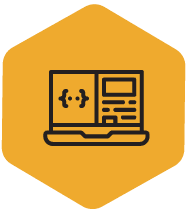
Application Development
Application Development basically serves to upgrade the application with new features such as user education and UX improvement. Its goal is to increase app user satisfaction.
- Updating existing functional modules.
- Developing new application features.
- Suggesting new features based on user feedback.
- Feasibility studies and ROI calculations.
- Adding software integrations.
- Application re-architecting, modernization.
- Mature Agile and DevOps processes for regular releases and easy update deployment.
- Introducing advanced app innovations and faster time to market.
- Proficiency in IT innovations (e.g., AI/ML, AEM, Liferay, PHP, IoT, AR/VR) to support and maintain apps with advanced functionality.
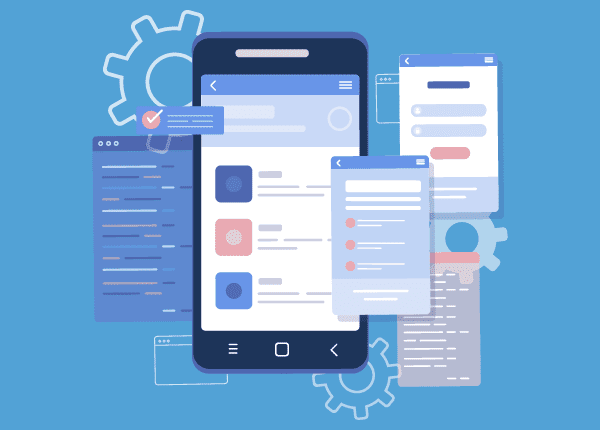

Application Development
Application Development basically serves to upgrade the application with new features such as user education and UX improvement. Its goal is to increase app user satisfaction.
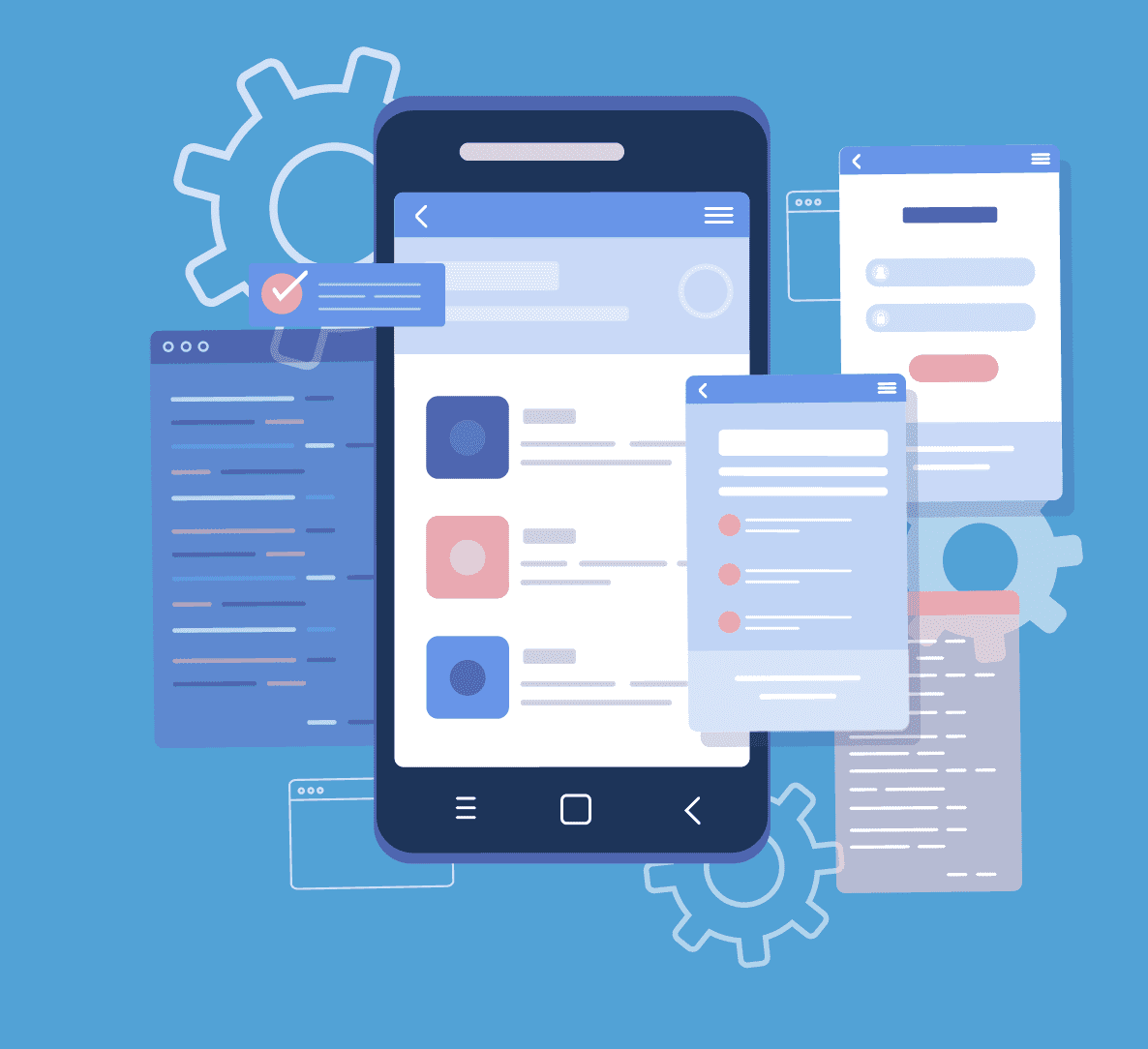
- Updating existing functional modules.
- Developing new application features.
- Suggesting new features based on user feedback.
- Feasibility studies and ROI calculations.
- Adding software integrations.
- Application re-architecting, modernization.
- Mature Agile and DevOps processes for regular releases and easy update deployment.
- Introducing advanced app innovations and faster time to market.
- Proficiency in IT innovations (e.g., AI/ML, AEM, Liferay, PHP, IoT, AR/VR) to support and maintain apps with advanced functionality.
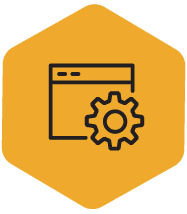
Application Maintenance & Support
Application Maintenance & Support focuses on the routine operations required to keep the application reliable so that the business can run smoothly, and the end users can use the application effectively. This is aligned with the evolving business needs. ADM would cover a number of tasks, including bug fixing, and incident management, focused on server security, compliance monitoring, app scalability, and resolving any issues that may arise. It covers troubleshooting, Preventive and Proactive Maintenance and Support with a flexible and scalable AMS engagement model.
Support Activities:
- Incident Investigation, Troubleshooting, and Management.
- Application support and incident troubleshooting fully tailored to your needs (e.g. Customer support (L1), Immediate Support (L2), and Development Support (L3) + QA + app evolution).
- Problem Management and Root Cause Analysis (RCA).
- Process and SLA Compliance.
- Incident and Service-Level Reports.
- Scheduled app vulnerability and misconfiguration diagnostics.
- Continuous performance and UX optimization.


Maintenance Activities:
- Regular Health Checks and Reporting.
- OS, Software, Patch, and Service packs upgrade.
- Application performance monitoring to detect and resolve unfavorable trends.
- Detailed vulnerability reports.
- Security Issues Identification and Fixes.
- Optimize CPU, memory, and disk space usage of the application.
- Installation of patches, updates, and upgrades as required to support the application, including any changes required to ensure that the operating system remains as a supported environment.
- Notifications of new releases and service packs.

Application Maintenance & Support
Application Maintenance & Support focuses on the routine operations required to keep the application reliable so that the business can run smoothly, and the end users can use the application effectively. This is aligned with the evolving business needs. ADM would cover a number of tasks, including bug fixing, and incident management, focused on server security, compliance monitoring, app scalability, and resolving any issues that may arise. It covers troubleshooting, Preventive and Proactive Maintenance and Support with a flexible and scalable AMS engagement model.

Support Activities:
- Incident Investigation, Troubleshooting, and Management.
- Application support and incident troubleshooting fully tailored to your needs (e.g. Customer support
(L1), Immediate Support (L2), and Development Support (L3) + QA + app evolution). - Problem Management and Root Cause Analysis (RCA).
- Process and SLA Compliance.
- Incident and Service-Level Reports.
- Scheduled app vulnerability and misconfiguration diagnostics.
- Continuous performance and UX optimization.
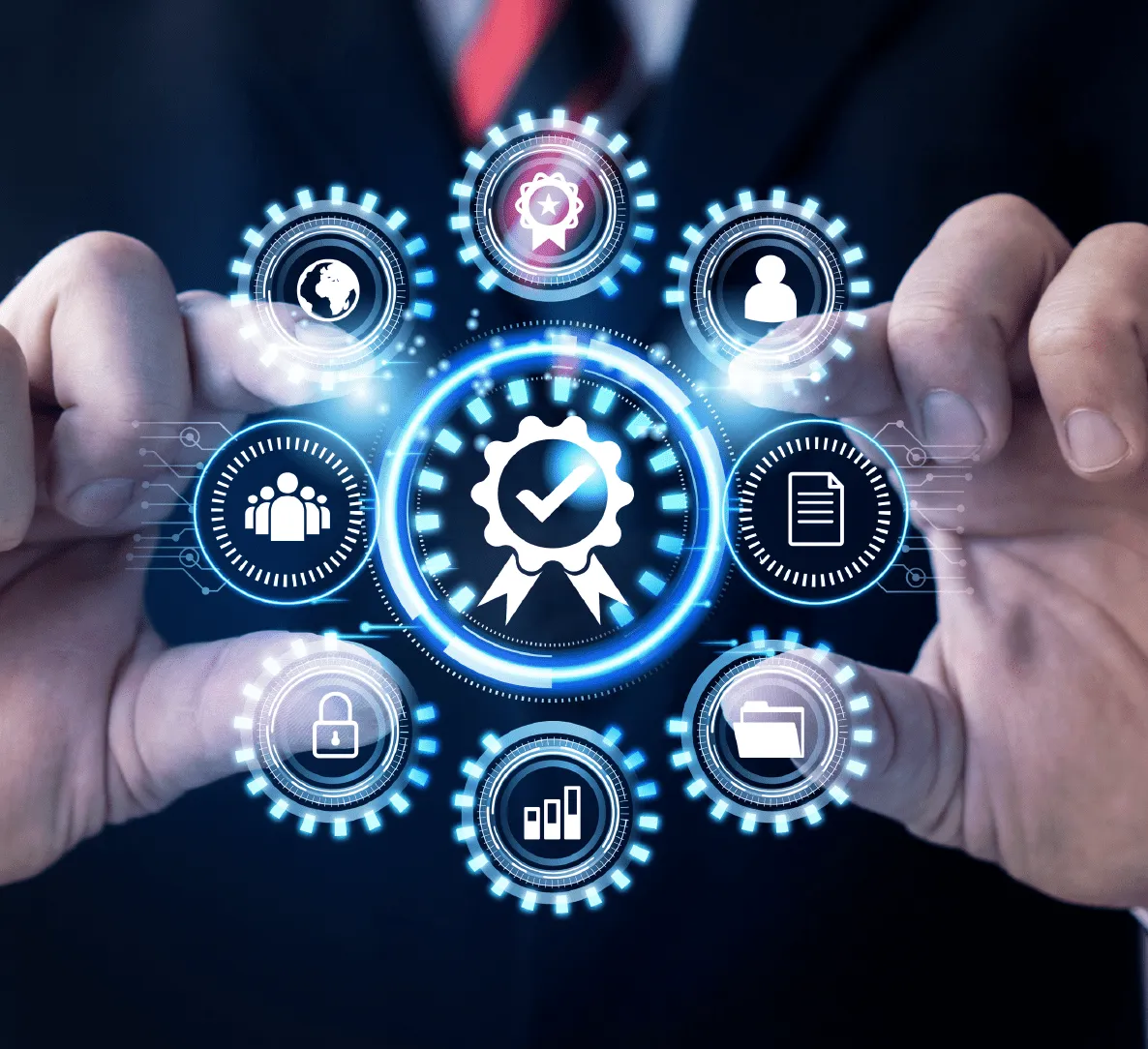
Maintenance Activities:
- Regular Health Checks and Reporting.
- OS, Software, Patch, and Service packs upgrade.
- Application performance monitoring to detect and resolve unfavorable trends.
- Detailed vulnerability reports.
- Security Issues Identification and Fixes.
- Optimize CPU, memory, and disk space usage of the application.
- Installation of patches, updates, and upgrades as required to support the application, including any changes required to ensure that the operating system remains as a supported environment.
- Notifications of new releases and service packs.
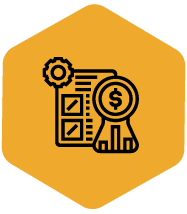
How do our ADM Services work?
- Youngsoft will appoint a Single Point of Contact [SPoC].
- Designated SPOC and Client would access the project tracking system that they mutually agreed to.
- The Client team will raise tickets in the project tracker related to any of the maintenance tasks.
- The Youngsoft Development team would provide the approach, estimate and timelines details on the same.
- The client team will review the same and can approve/reject.
- For the approved tasks, the Youngsoft development team will perform development work on tasks and will keep the tracker updated with the latest statuses.
- The Youngsoft Dev team will commit and deploy the new and/or modified code to lower environments and test it.
- Upon completion of quality testing and UAT, the Youngsoft team will deploy or queue the relevant features/fixes for production release.
- The release of the deliverable to production will follow the standard Release Management promotion cycle that is defined in accordance with the client.
- The Youngsoft team will provide bi-weekly and monthly updates to the client team with the task description, hours used, whether partially or fully completed, and task status.
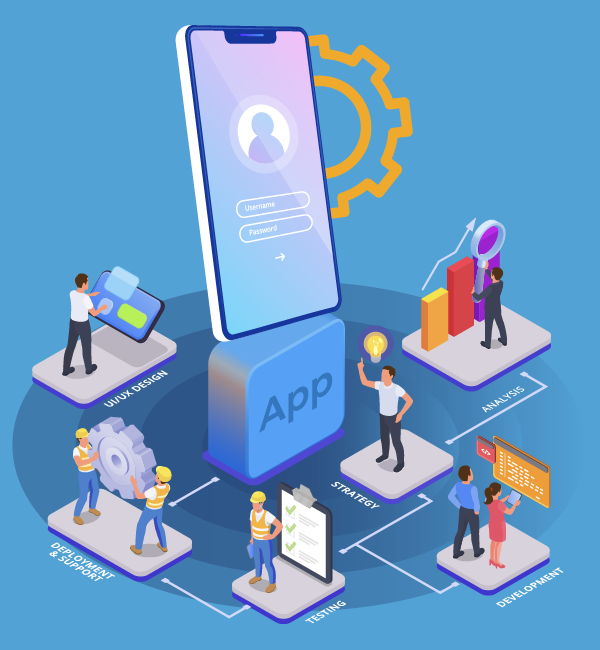

How do our ADM Services work?
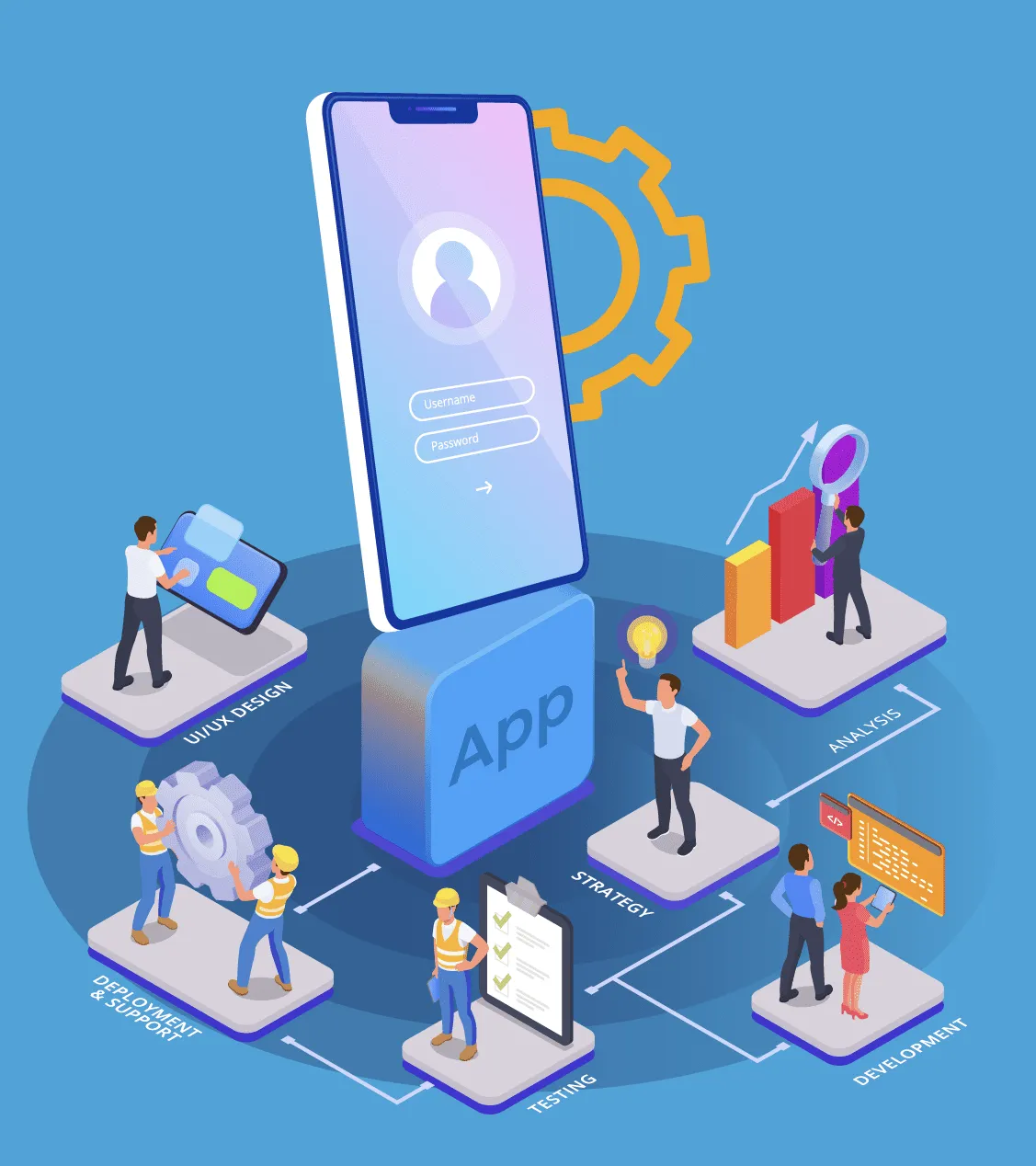
- Youngsoft will appoint a Single Point of Contact [SPoC].
- Designated SPOC and Client would access the project tracking system that they mutually agreed to.
- The Client team will raise tickets in the project tracker related to any of the maintenance tasks.
- The Youngsoft Development team would provide the approach, estimate and timelines details on the same.
- The client team will review the same and can approve/reject.
- For the approved tasks, the Youngsoft development team will perform development work on tasks and will keep the tracker updated with the latest statuses.
- The Youngsoft Dev team will commit and deploy the new and/or modified code to lower environments and test it.
- Upon completion of quality testing and UAT, the Youngsoft team will deploy or queue the relevant features/fixes for production release.
- The release of the deliverable to production will follow the standard Release Management promotion cycle that is defined in accordance with the client.
- The Youngsoft team will provide bi-weekly and monthly updates to the client team with the task description, hours used, whether partially or fully completed, and task status.
[B] Our Technical Support to Secure Your Business Continuity
Many companies outsource technical support because it is a suitable and cost-effective approach for improving productivity. Given below is the technical IT support levels overview.
-

Level-1
Service Desk Operator
Support Entry Point that:
- Inquiries about admissions, registrations, and prioritization
- Elicits additional information
- Resolves through the use of available predefined scenarios
-

Level-2
Support Engineers
Support Tier that:
- Takes over incidents that cannot be resolved immediately by means of L1
- Restores a failed IT Service as quickly as possible without changing the software code
-

Level-3
Technical Support
Support Tier that:
- Resolves Complex Problems
- Introduces changes and improvements to the existing software by changing the software code
How does IT Technical support work by different levels of support?
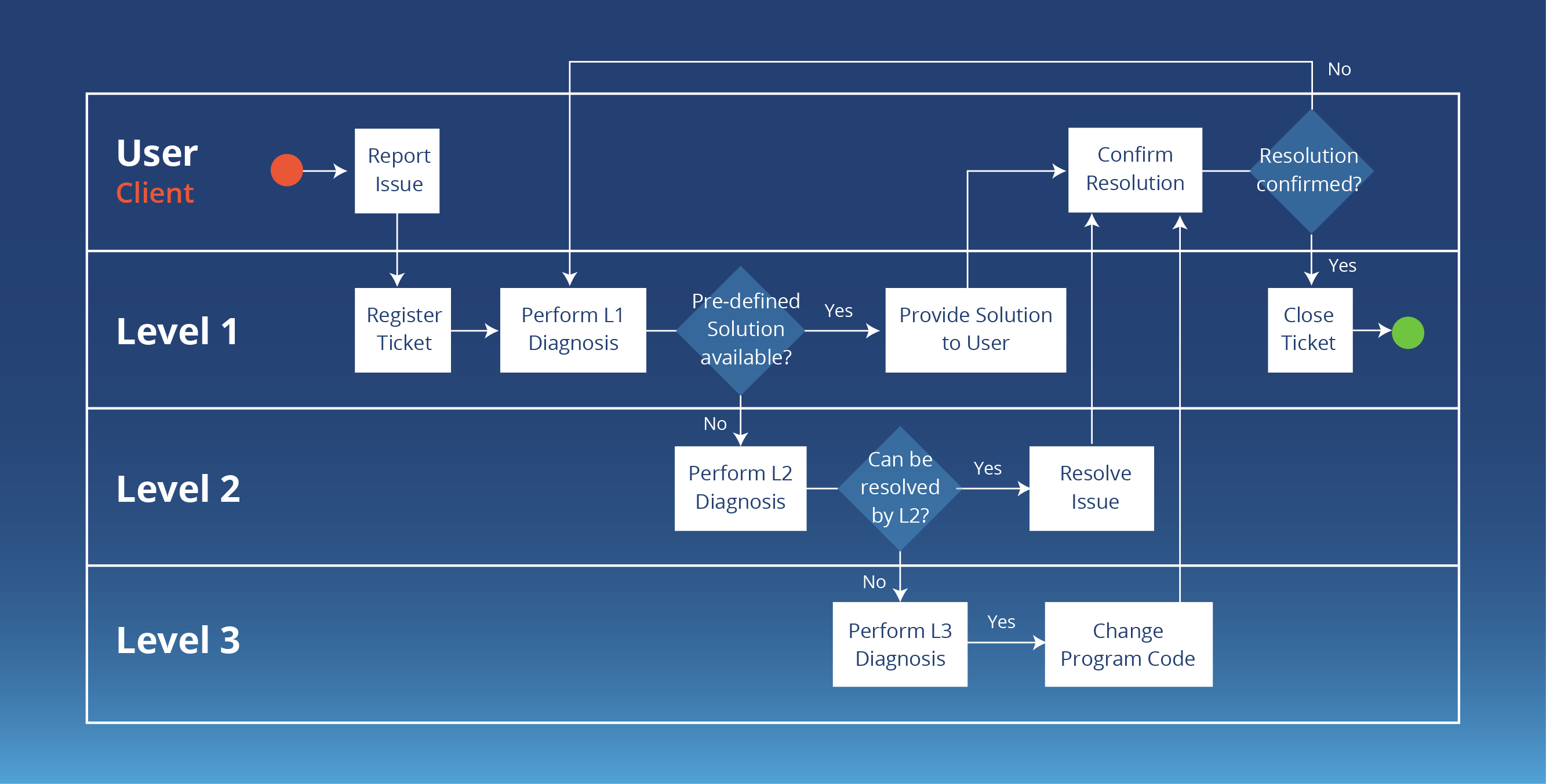
[C] Our RIMM services that Boost Efficiency and Security
In today’s quick-paced digital economy, Managed Service Providers (MSPs) like Youngsoft India can assist enterprises in meeting their IT needs. As IT environments become more complex, we can offer cutting-edge tools to improve processes, increase efficiency, and strengthen security measures. You can use our Remote Infrastructure Monitoring and Management (RIMM) service to efficiently manage and monitor the IT infrastructure of your company. The RIMM services from Youngsoft can improve your organization’s
security and productivity while receiving top-notch services.
- Our RIMM can perform real-time monitoring of your IT systems, servers, and endpoints. It can detect and resolve issues before they impact operations thus ensuring minimal downtime and business continuity.
- Our RIMM automates tasks, updates, and configurations. It can streamline operations, optimize resource allocation, and can free IT professionals for strategic initiatives.
- Our RIMM offers a centralized platform for managing IT ecosystems. It enables remote access, reduces travel expenses, and improves issue resolution speed.
- We provide scalability for organization expansion. It ensures efficient IT operations by accommodating branch expansion and employee onboarding.
- RIMM automates tasks, reduces manual interventions, and minimizes downtime costs. The result is RIMM is considered a cost-effective investment.
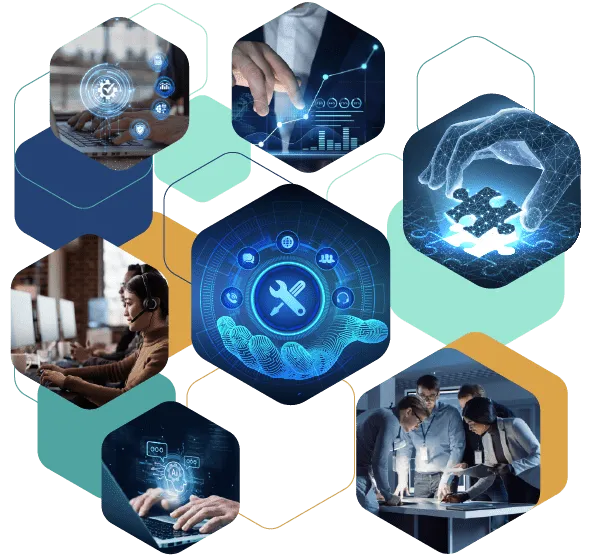
How our infrastructure and RIMM work?
Remote Infrastructure Monitoring & Management (RIMM) is vital in ITSM to support the delivery of IT services by providing remote support and monitoring IT systems. It offers proactive monitoring, streamlined operations, enhanced security, and efficient client communication, enabling you to offer exceptional IT solutions. Youngsoft India will support you in remotely monitoring your organization’s Infrastructure endpoints, networks, and computers.
Youngsoft’s Remote Infrastructure Monitoring and Management (RIMM) services are designed to simplify the IT systems management procedure. Here’s how it works:

- Installing: The initial step is to install the required monitoring tools that are vital to look after the infrastructure in accordance with client security and privacy policies.
- Configuring: We configure the monitoring tools based on your needs, including monitoring parameters, device management policies, and patch applications.
- Monitoring: The installed tool’s software will monitor networks and devices 24/7 after the completion of installation and configuration. It will notify the RIMM team about any problems and provide real-time data on system performance.
- Reporting: The RIMM crew would notify the application and stakeholder teams of any incidents that occurred in accordance with the mutually established SLAs. The RIMM team would open the tickets in the incident management system and monitor the incident’s progress until it was resolved. Depending on the agreed-upon frequency, the team will send reports containing all incident data, including severity, priority, and offered solutions.
The software will monitor networks and devices 24/7 after the completion of installation and configuration. It will notify intended users about any problems and provide real-time data on system performance.
Benefits of our ITSM
The necessity for efficient ITSM becomes vital as organizations depend more and more on technology to power their business operations.
The benefits of procuring our ITSM services:
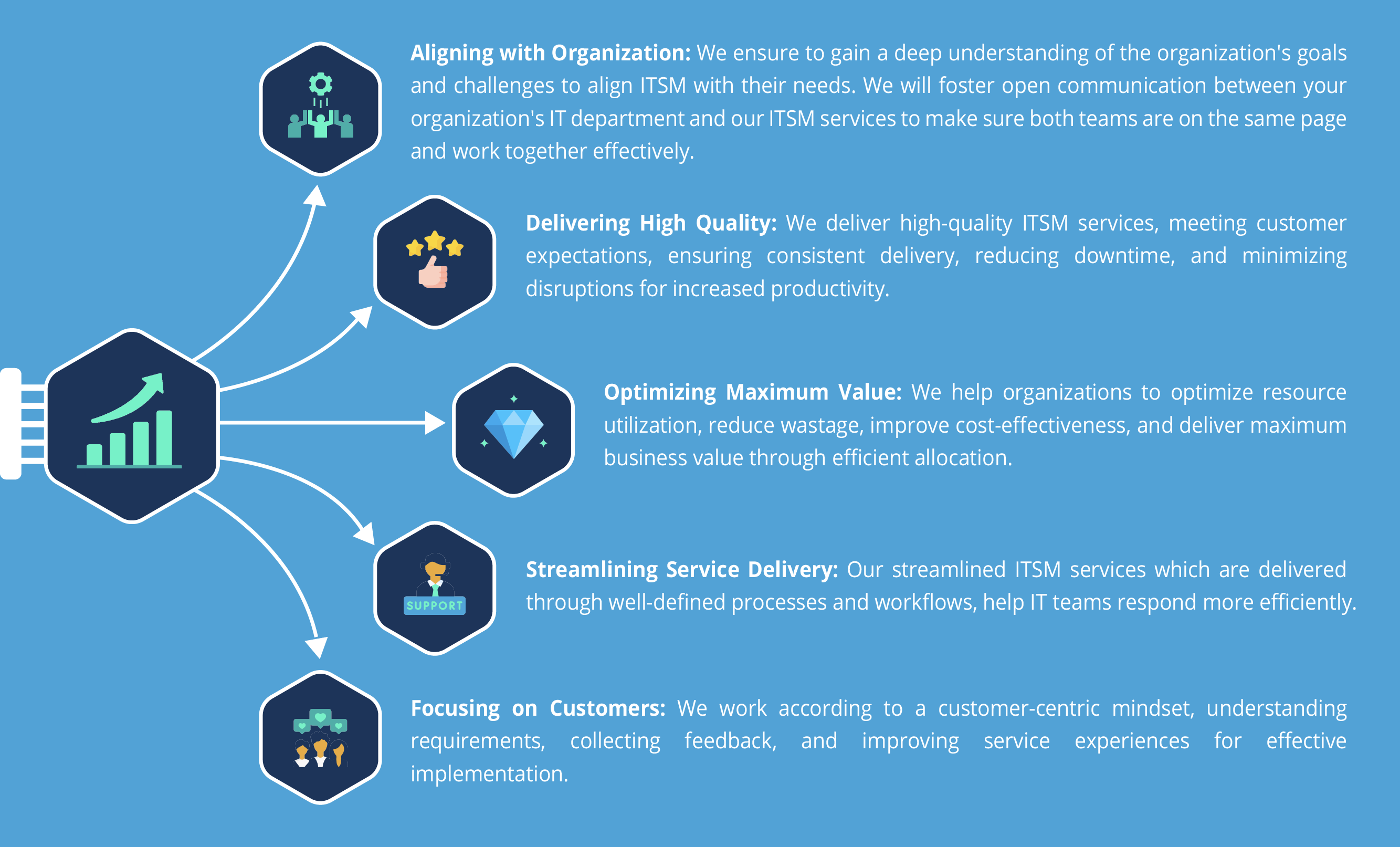
Benefits of our ITSM
The necessity for efficient ITSM becomes vital as organizations depend more and more on technology to power their business operations.
The benefits of procuring our ITSM services:
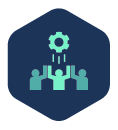 Aligning with Organization:We ensure to gain a deep understanding of the organization’s goals and challenges to align ITSM with their needs. We will foster open communication between your organization’s IT department and our ITSM services to make sure both teams are on the same page and work together effectively.
Aligning with Organization:We ensure to gain a deep understanding of the organization’s goals and challenges to align ITSM with their needs. We will foster open communication between your organization’s IT department and our ITSM services to make sure both teams are on the same page and work together effectively. Delivering High Quality:We deliver high-quality ITSM services, meeting
Delivering High Quality:We deliver high-quality ITSM services, meeting
customer expectations, ensuring consistent delivery, reducing downtime, and minimizing disruptions for increased productivity. Optimizing Maximum Value:We help organizations to optimize
Optimizing Maximum Value:We help organizations to optimize
resource utilization, reduce wastage, improve cost-effectiveness, and deliver maximum business value through efficient allocation. Streamlining Service Delivery:Our streamlined ITSM services which are
Streamlining Service Delivery:Our streamlined ITSM services which are
delivered through well-defined processes and workflows, help IT teams respond more efficiently. Focusing on Customers: We work according to a customer-centric mindset,
Focusing on Customers: We work according to a customer-centric mindset,
understanding requirements, collecting feedback, and improving service experiences for effective implementation.
Why Choose Our ITSM Services?
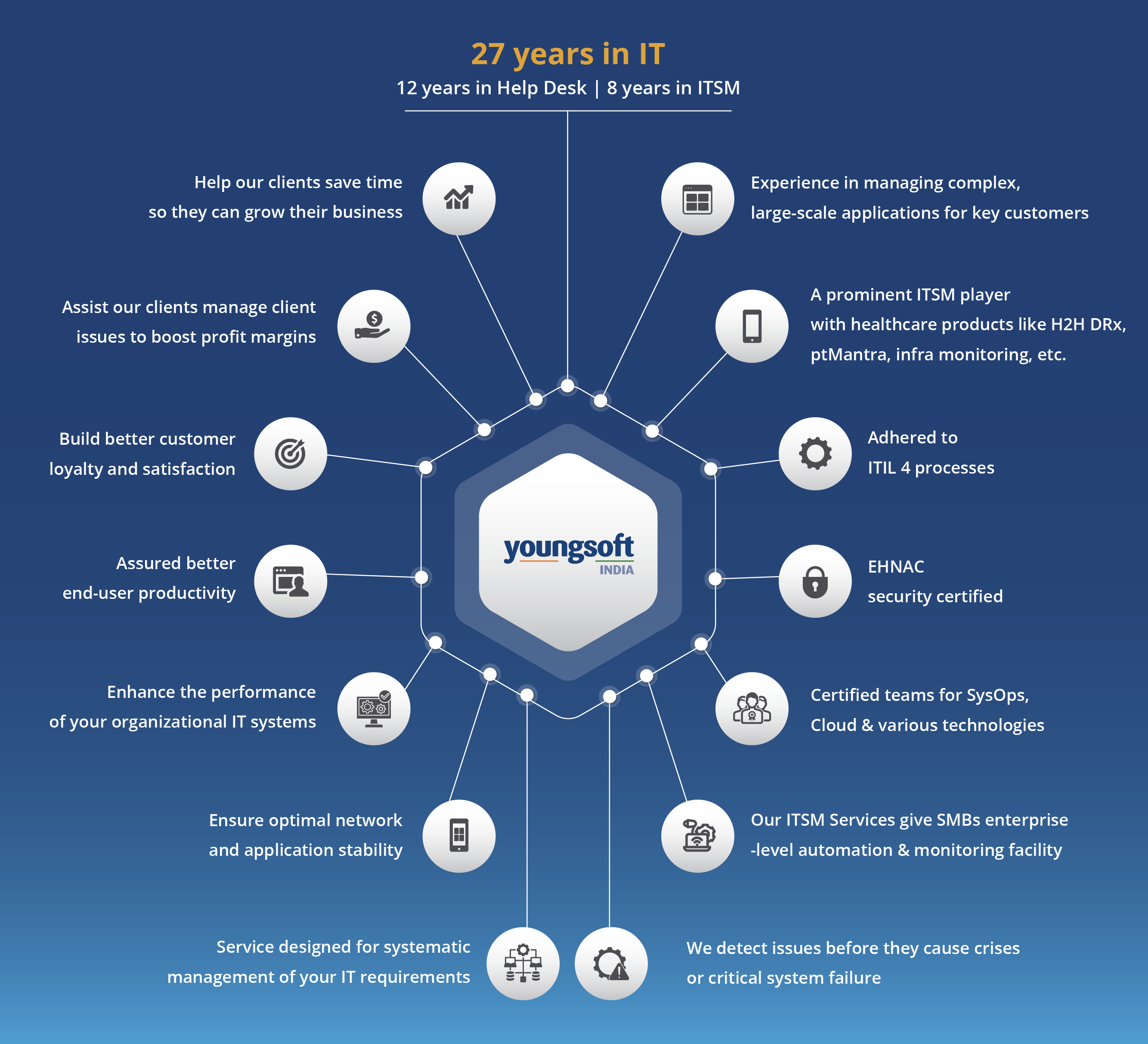
ITSM-Support Plans
| Support Activities | Basic | Standard | Professioal | Dedicated |
|---|---|---|---|---|
| Application Development & Maintenance |
Yes | Yes | Yes | Can be Customized to meet Client Needs |
| Technical Support [L1, L2, L3] | No | No | Yes | |
| Remote Infrastructure Monitoring Management [RIMM] |
No | No | Yes | |
| Support Levels | Shared Model | Shared Model | Shared Model | |
| L1 & L2 Support Timings | 8X5 | 16X5 | 24X7 | |
| Staff Plan | No onshore Support, Offshore shared model |
No onshore Support, Offshore shared model |
Dedicated onshore (1 No), Offshore shared model |
|
| L1 and L2 | Business Hours | Business Hours++ | 24 Hours | |
| L3 | Offshore Business Hours | |||
| Support Type | Monitoring, Incident Fixes, Enhancements | |||
| Support Collaboration | Email/Online Issue Management Tools/Phone | |||

